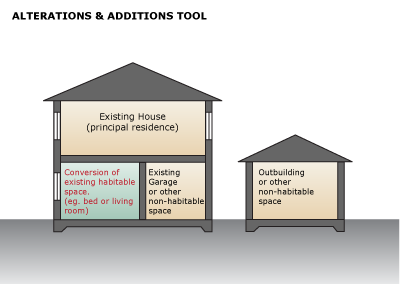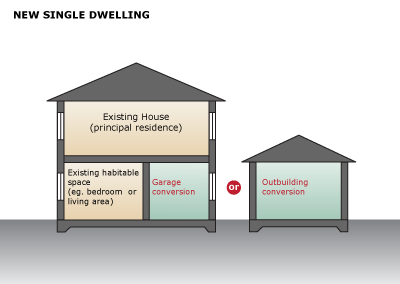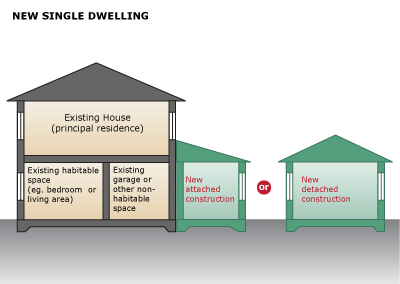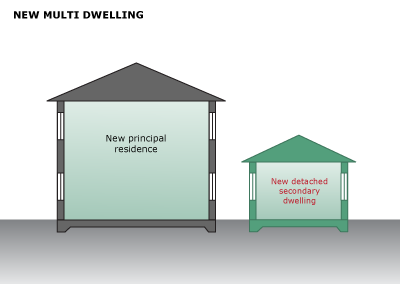A secondary dwelling is a self-contained dwelling that:
- is established in conjunction with another dwelling (the principal dwelling), and
- is on the same lot of land as the principal dwelling, and
- is located within, or is attached to, or is separate from, the principal dwelling.
To generate a BASIX certificate for a secondary dwelling it is necessary to consider whether the secondary dwelling is new works in its own right or if it is an alteration and addition to the existing dwelling. This is usually best determined in consultation with the consent authority (typically the relevant local council) however, the following help note provides general guidance.
Classifying the granny flat or bedsitter on Project type page
A secondary dwelling creates an additional dwelling entitlement on one land parcel. If there is an intention for the land is to be further subdivided or subject to strata title, the project is not a secondary dwelling. A secondary dwelling is in addition to a (larger) principal dwelling, often already built on the site. For the purpose of generating a BASIX certificate, the secondary dwelling can be classified as either:
| CLASSIFICATION | BASIX TOOL |
|
Alterations and Additions |
NOTE: For projects with an existing principal dwelling, the apportionment rules apply for determining the relevant site area and landscape area applicable to the secondary dwelling. |
New single dwelling |
|
New multi-dwelling |
The principal dwelling may be existing or a new building that is part of the same development application. Where both the principal and secondary dwellings are new, a BASIX certificate is required that covers both dwellings (all of the new work) and the project should be entered into BASIX in the same way as a dual occupancy (Multi dwelling houses- more than one dwelling on a single lot).
Illustrative examples are provided below.

1. Conversion of existing habitable space within the footprint of an existing residence to Secondary Dwelling

2.Conversion of existing non-habitable space to Secondary Dwelling. Use New Single-dwelling tool and apportionment rules for site area

3.Secondary dwelling created as a new construction. Use New Single-dwelling tool and apportionment rules for site area

4.New principal residence and new Secondary dwelling for development at the same time. Use New Multi-dwelling tool